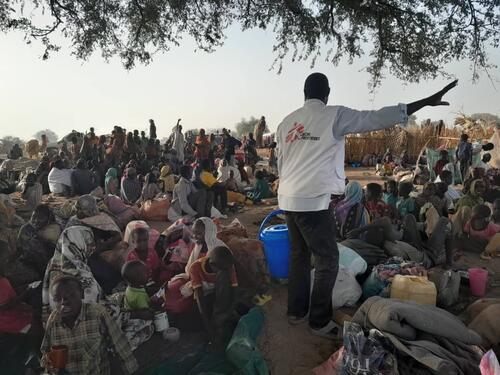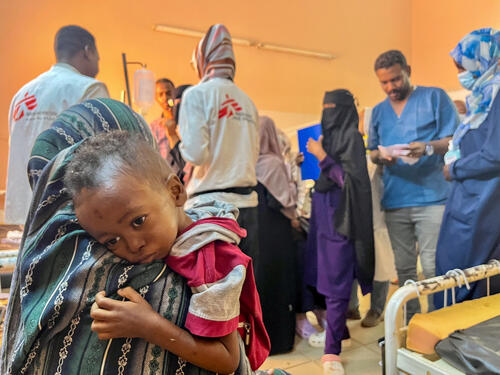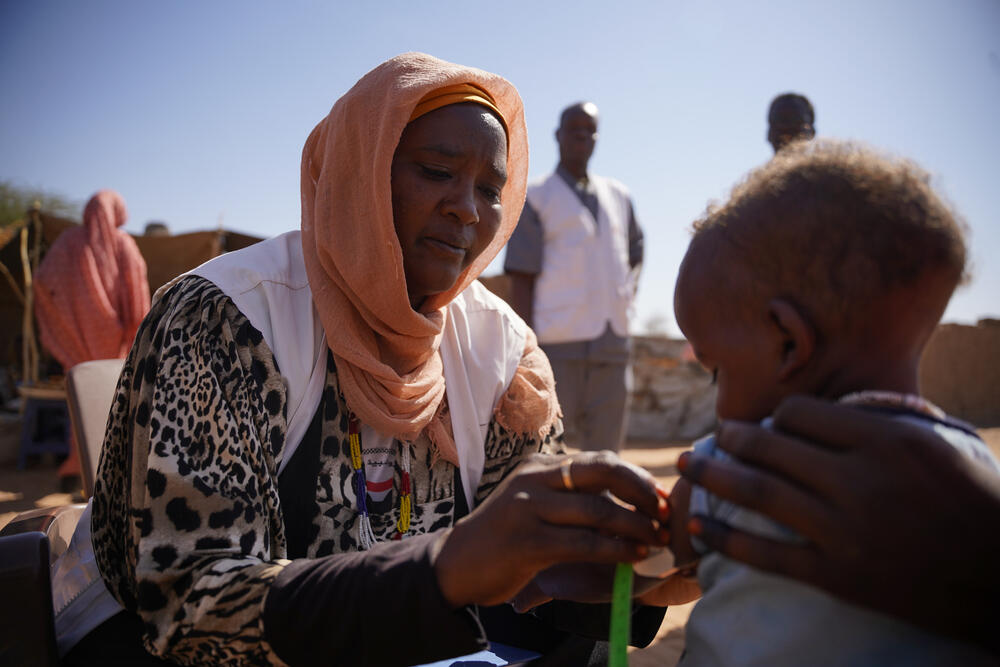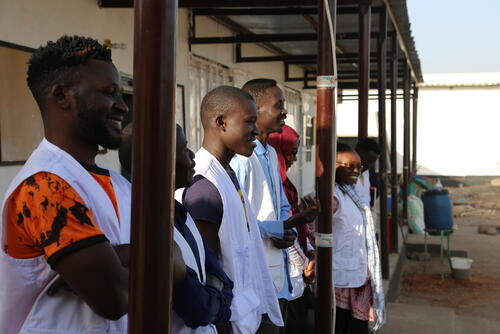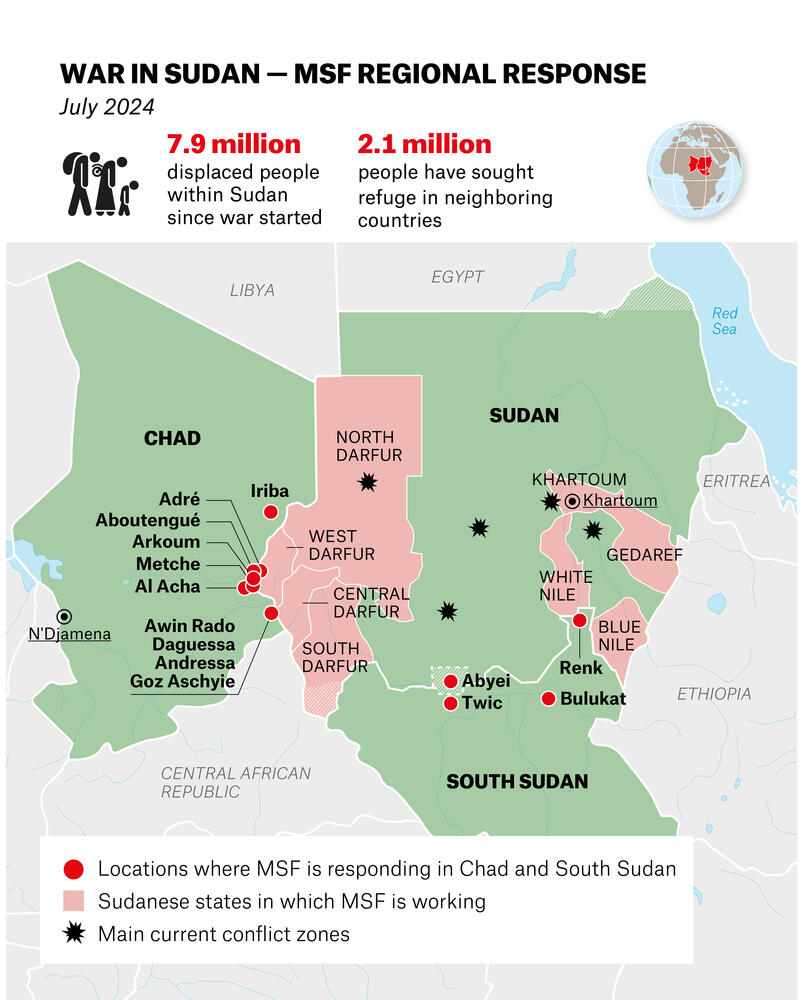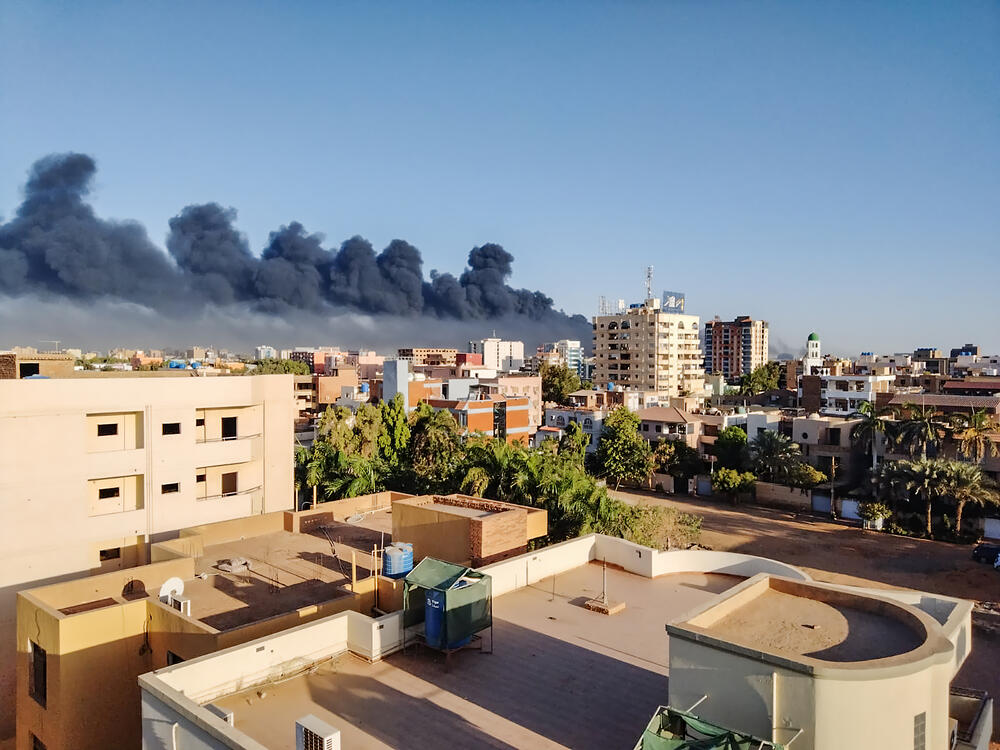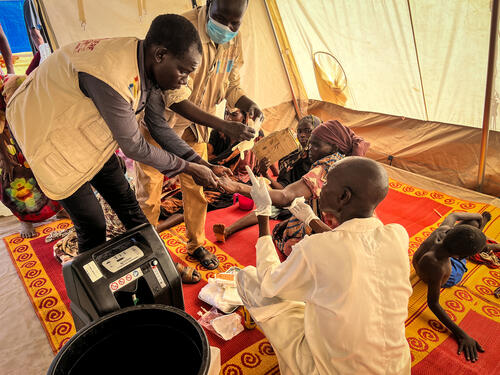Sudan Crisis
On Saturday 15 April 2023, a brutal civil war broke out across Sudan with a wave of gunfire, shelling and airstrikes.
The violence between the Sudanese Armed Forces (SAF) and the Rapid Support Forces (RSF) has trapped millions of people in the middle of an unexpected conflict. Hundreds of thousands have been forced to flee their homes while access to essential services such as healthcare has become increasingly difficult.
Médecins Sans Frontières / Doctors Without Borders (MSF) teams already working in Sudan have been responding to the crisis since its first moments.
Our healthcare projects and hospitals – in some places the only medical facilities still open – have treated influxes of critical patients: the war-wounded, pregnant women in labour, and chronically ill people with nowhere else to go. At the same time, MSF teams in neighbouring Chad have received huge numbers of injured refugees who have travelled for miles to reach urgent care.
However, the wider international response is still inadequate, and Sudanese authorities have imposed restrictions on humanitarian organisations. This means that people in need are now further cut off from care.
MSF urges that Sudan must not become a forgotten crisis.
What is happening in Sudan?
As of November 2024, more than 11 million people have been forcibly displaced by the conflict. This includes many who have crossed international borders to seek safety in South Sudan, Chad and Egypt. Displaced people across the country and region are now sheltering in crowded and often precarious conditions.
MSF alone has recorded at least 60 incidents of violence against our people, our vehicles and our buildings. The World Health Organization (WHO) estimates that between 70 and 80 percent of Sudan's healthcare facilities are not operating at full capacity.
A staggering 25 million people are estimated to need humanitarian assistance in Sudan and MSF has been working with the Ministry of Health to treat some of this vast number of people who require urgent medical care. However, the Government of Sudan has repeatedly and deliberately obstructed humanitarian aid, especially to areas outside of SAF control.
The conflict has disrupted food supply across Sudan and people have been cut off from their jobs, meaning millions now face a new crisis: hunger. At Zamzam – a vast camp in North Darfur where over 450,000 people are sheltering – our teams have witnessed the deadly impact of this food insecurity, with a malnutrition rate well above emergency levels. Across Sudan, the condition is widespread an rising.
The obstruction of humanitarian aid means medical supplies are critically low. At times, this had made some life-saving care almost impossible.
In a crisis within a crisis, women and children are facing dangerous but preventable conditions. One MSF report found a staggering mortality rate among pregnant patients, driven by malnutrition, unsanitary environments and the collapse of everyday healthcare.
What is MSF doing in Sudan?
MSF currently works in or supports 21 hospitals and 12 healthcare centres or clinics (including our mobile clinics) across 11 of Sudan's 18 states. Right now, our expert teams:
Provide emergency treatment and carry out surgeries, including trauma care, for war-wounded and non-war-related injuries
- Run mobile clinics for displaced people sheltering in camps and at transit sites
- Provide safe maternity and paediatric healthcare
- Run therapeutic feeding programmes for children suffering from malnutrition
- Treat infectious diseases and deliver vaccination programmes in response to outbreaks
- Provide mental health support for survivors of sexual and gender-based violence
- Deliver essential safe water and sanitation services
- Donate critical medical supplies and equipment to healthcare facilities, and provide training and logistical support to Ministry of Health staff
How can I help MSF in Sudan?
Right now, our teams in Sudan are treating patients injured or affected by the conflict. This is only possible because of donations from people like you.
By donating to our Sudan fund today, you will be helping ensure we can respond to this emergency.
Please donate today to support our emergency teams.
Background to the Sudan crisis
Following a military coup in 2021, most international aid to Sudan was frozen. This led to an economic crisis and increased food insecurity.
Sudan’s healthcare system was also extremely fragile even before the recent escalation in violence and access to basic medical services has been a challenge for most people.
This critical situation has been caused by a combination of recurring violence and conflict, the economic situation and the cost of healthcare, and an overall lack of medical staff and resources.
Added to this, the sharp decline in international aid has had consequences including reduced vaccination coverage and increased malnutrition among children.
Before the conflict, around 78,000 children under five were dying each year due to preventable causes such as malaria. In the first four months after 15 April, around 50,000 children with accurate malnutrition had their treatment disrupted.
Sudan also already had a high maternal mortality rate, with around 25 percent of births unattended by a skilled healthcare professional.
The stark reality is that Sudan’s healthcare system has been on the verge of collapse for decades. However, with the rapidly deteriorating humanitarian and security situation, low-running supplies and under-pressure staff, it is now at breaking point.
Latest from Sudan:
